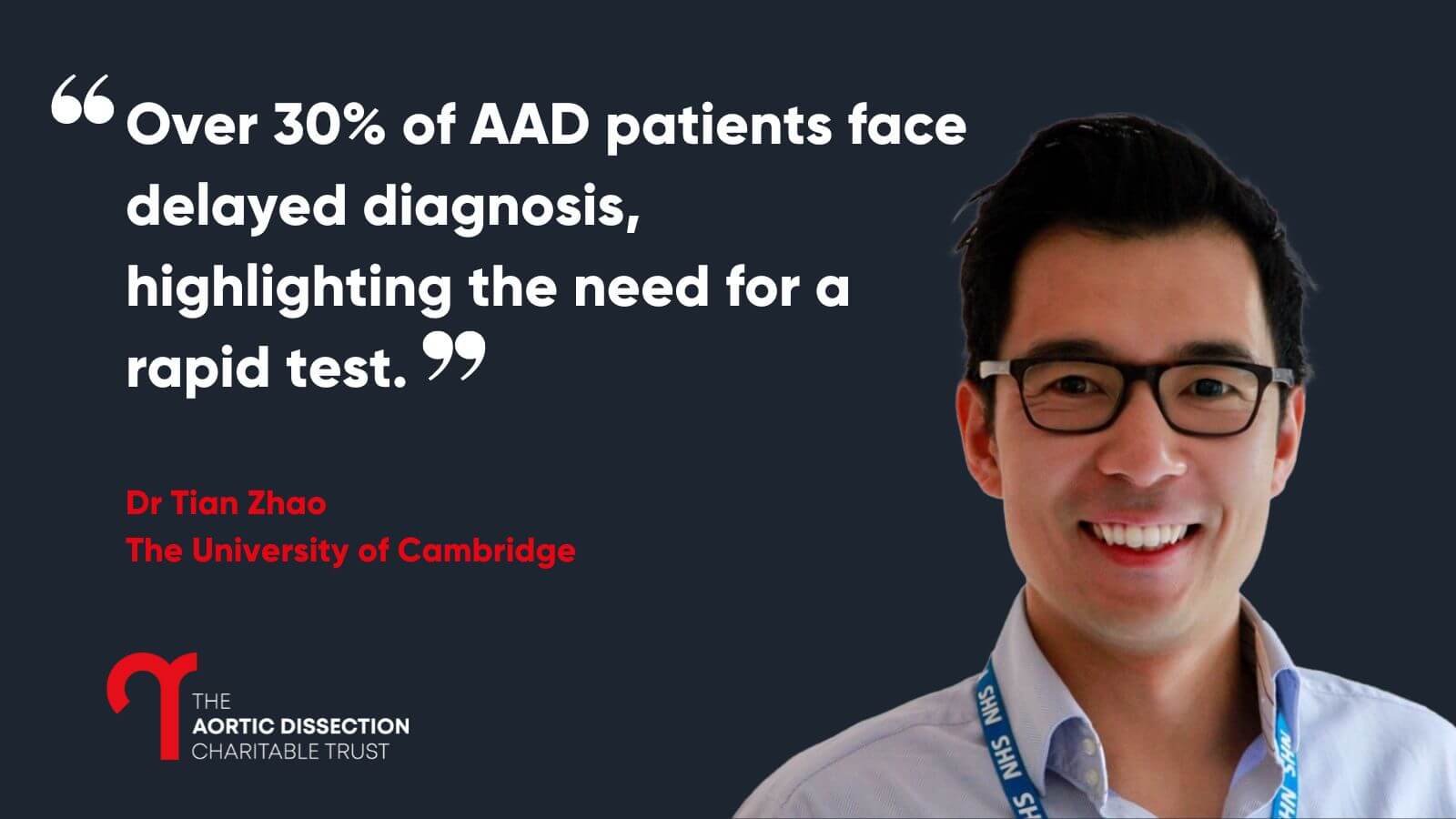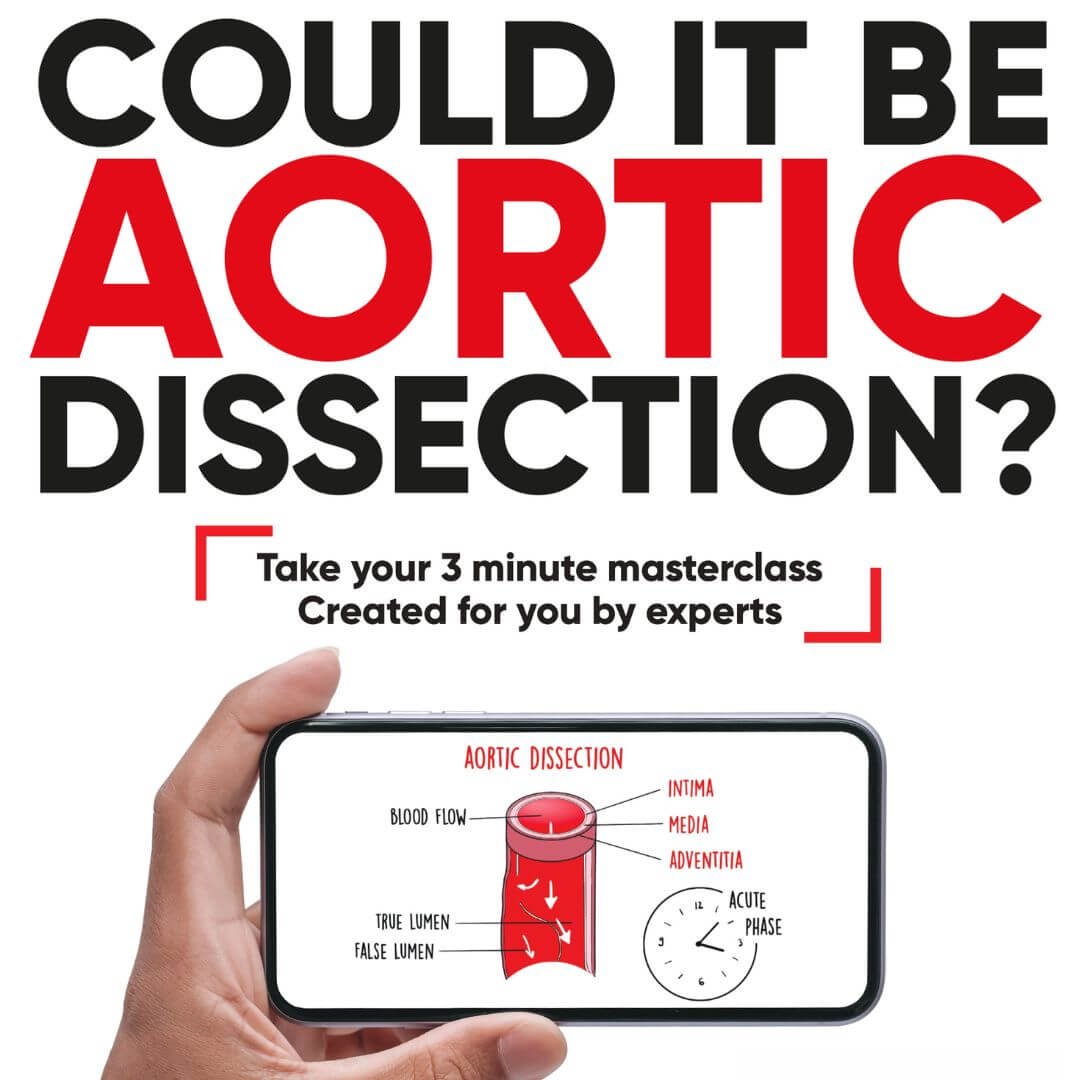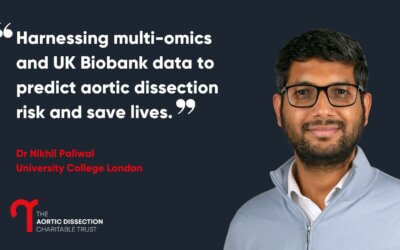September is a pivotal month in the aortic disease community, with Aortic Disease Awareness Month taking centre stage, complemented by Aortic Dissection Awareness Day on September 19th. Each year, organisations, charities, and individuals come together to raise awareness, share knowledge, and engage new audiences in the fight against this life-threatening condition. This year was no exception, with innovative campaigns, significant educational efforts, and groundbreaking research underscoring the importance of early diagnosis and proper care for aortic dissection. Here’s a comprehensive look at the key highlights from the month, focusing on efforts within the UK and Ireland.
Reaching New Audiences
One of the standout successes this September was the expansion of the charity’s Could it be Aortic Dissection? education campaign, which reached an additional 620,000 people across the UK and Ireland. This initiative has been crucial in educating the public and medical professionals about the signs of aortic dissection. The ripple effect of this campaign was noticeable, with a surge in enquiries from volunteers and fundraisers eager to help in spreading awareness further.
The drive behind this campaign is to inform those who might not be aware of the risks or symptoms of aortic dissection, which, if left undiagnosed, can have devastating consequences. By innovating outreach efforts, the charity has managed to capture the attention of new audiences, many of whom had never previously heard of aortic dissection.
Spotlight on Diagnosis
World Patient Safety Day, September 17th, provided another critical platform for raising awareness around aortic disease, particularly focusing on the importance of timely diagnosis in patient safety. This year’s theme, Improving Diagnosis for Patient Safety, resonated with the aortic disease community, as many diagnostic delays can lead to tragic outcomes.
The charity contributed to this global day by sharing patient stories in partnership with the Patient Safety Learning Hub. One key story illustrated how early diagnosis can save lives, highlighting both the necessity of accurate and timely diagnosis and the lessons learned from past errors. Discussions during the event covered a wide range of vital topics, including the importance of rapid diagnosis and the need to listen to patients.
Education and Simulation in Scotland
Our annual educational event in Scotland was another significant milestone this September. With Scotland’s diagnosis rates for aortic dissection among the lowest in the UK, and mortality rates the highest, this event addressed a critical need for improved emergency response and diagnosis.
The live, interactive simulation of aortic dissection diagnosis and early management provided paramedics and emergency medicine professionals with hands-on experience in handling this life-threatening condition. A POCUS (Point-of-Care Ultrasound) training session also introduced new techniques to improve early identification. Patient stories shared at the event underscored the gravity of delayed diagnoses and helped emphasise the necessity of ongoing education, especially in regions with the highest mortality rates.
Patient Symposium
In collaboration with the Marfan Foundation, the charity helped deliver the Marfan International Patient Symposium in London, which became the foundation’s most successful and well-attended patient event to date. This symposium brought together charities and experts from around the world to discuss conditions like Marfan syndrome, which carries a significant risk of aortic dissection. Events like this highlight the collaborative spirit within the aortic disease community and the shared mission to save lives through better awareness and research.

Collaborative Care for Vascular Patients
This September, the charity became part of the exciting development of the Vascular Voice Network, a new collaborative platform aiming to unite organisations and individuals affected by both rare and common vascular conditions. With vascular disease accounting for 40% of deaths in the UK, the network seeks to bridge the gap in sharing critical research, best practices, and patient experiences across the vascular community. Supported by Hereditary Brain Aneurysm Support and Genomics England, the charity has actively engaged with other stakeholders to create a unified space for advancing understanding, advocacy, and support for vascular disease patients. The inaugural meeting, held on September 19th, marked the first step in building this vital network, with plans to form a smaller working group to establish a sustainable, patient-centred platform moving forward.
Community Engagement and Recognition
As autumn approached, fundraising efforts blossomed across the UK and Ireland, with musical events, charity runs, and other community activities taking place throughout September. These events not only raised vital funds for ongoing awareness campaigns and research but also helped bring communities closer to the cause.
One highlight was Emily’s recognition at the BBC Kent Make a Difference Awards for 2024, acknowledging her dedication to raising awareness of aortic dissection. Fundraisers like Emily play an indispensable role in ensuring that the message reaches new audiences and that more lives are saved through education and early diagnosis.
Research Grants 2024
September also saw exciting advances in the field of aortic disease research, with several new projects being awarded grants. Each of these projects promises to push the boundaries of our understanding and treatment of aortic dissection.
Award 1: Sex-Specific Outcomes and Quality of Life Post-Aortic Dissection
Led by Professor Julie Sanders, this research focuses on the long-term health-related quality of life (HRQoL) and recovery outcomes for aortic dissection survivors, with a specific emphasis on sex-specific differences. Research in this area has been limited, especially in the UK and Ireland, and this study aims to bridge that gap. The project recognises that women may experience poorer outcomes than men and seeks to involve patients in shaping research priorities, ensuring a more inclusive approach to post-AD care.
Award 2: AI-Driven Digital Pathology for Aortic Dissection
This ambitious project aims to integrate artificial intelligence with digital pathology to improve post-operative care for aortic dissection patients. The development of AI-powered software capable of analysing aortic tissue samples in real-time will provide surgeons with vital insights into patient risks, allowing for more precise future interventions. Such advances could revolutionise care by enabling earlier interventions and improving patient outcomes through predictive modelling.
Award 3: Diagnostic Blood Test for Acute Aortic Dissection
Perhaps one of the most promising research initiatives, this project focuses on developing a blood test capable of diagnosing Acute Aortic Dissection (AAD). Current diagnostic methods rely heavily on CT scans, which are costly and expose patients to radiation, with only 3% of these scans yielding positive results. A blood test could provide a faster, safer, and more efficient alternative, saving lives by facilitating earlier detection and targeted treatment.
Evaluating Current UK Pathways
The Collaborative Acute Aortic Syndrome Project (CAASP), published by the Vascular and Endovascular Research Network (VERN), also shed new light on care pathways across the UK. This multicentre study provided a real-world evaluation of acute aortic syndrome (AAS) care, linking time-based delays in diagnosis and treatment to clinical outcomes. Among the critical findings:
- Delays in diagnosis were more common in patients who did not present with typical symptoms, such as chest pain.
- Socioeconomic factors played a role in delays, with lower-income patients facing longer times to hospital presentation despite living closer to hospitals.
- Patients requiring transfer to specialist centres after an initial diagnosis often experienced further delays in receiving treatment.
This study reinforces the need for improved educational initiatives and streamlined care pathways, particularly for those at higher risk of delayed diagnosis or treatment.
The Future of Aortic Disease Awareness
As the aortic disease community reflects on the progress made in September, the work is far from over. While awareness campaigns have reached hundreds of thousands of new people, educational efforts have improved diagnosis and care pathways, and groundbreaking research is set to change the future of aortic dissection treatment, there is still much to be done.
With the population ageing and the number of aortic dissection cases projected to rise in the coming decades, the need for improved diagnostic tools, better care pathways, and continued public awareness is more urgent than ever. The charity remains dedicated to pushing boundaries, reaching new audiences, and saving more lives in the process.







